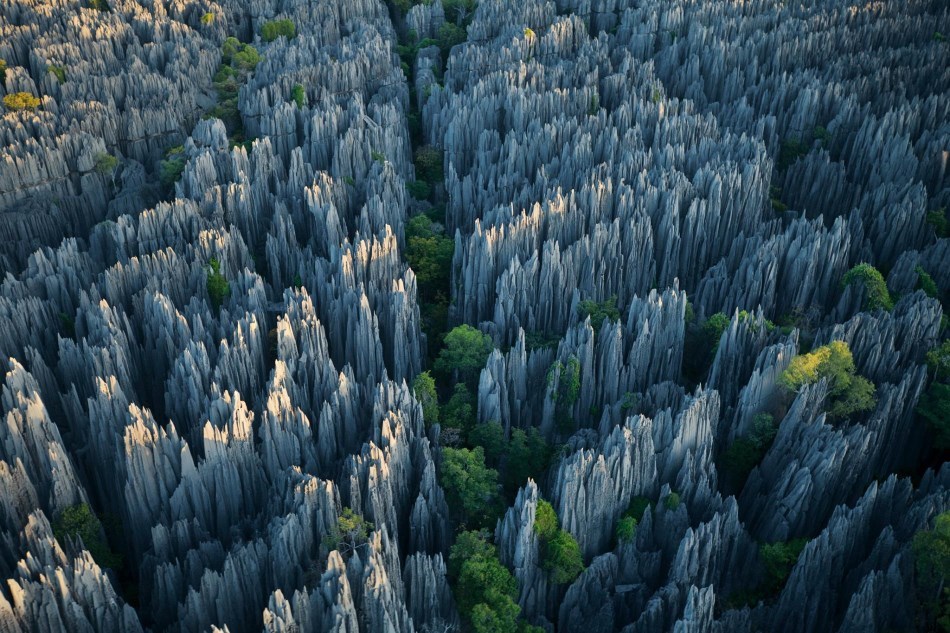The Tsingy rise up to 70 meters from the ground. At these heights, the tops are bare and razor sharp. At lesser heights, one gets to see vegetations with roots tens of meters below.
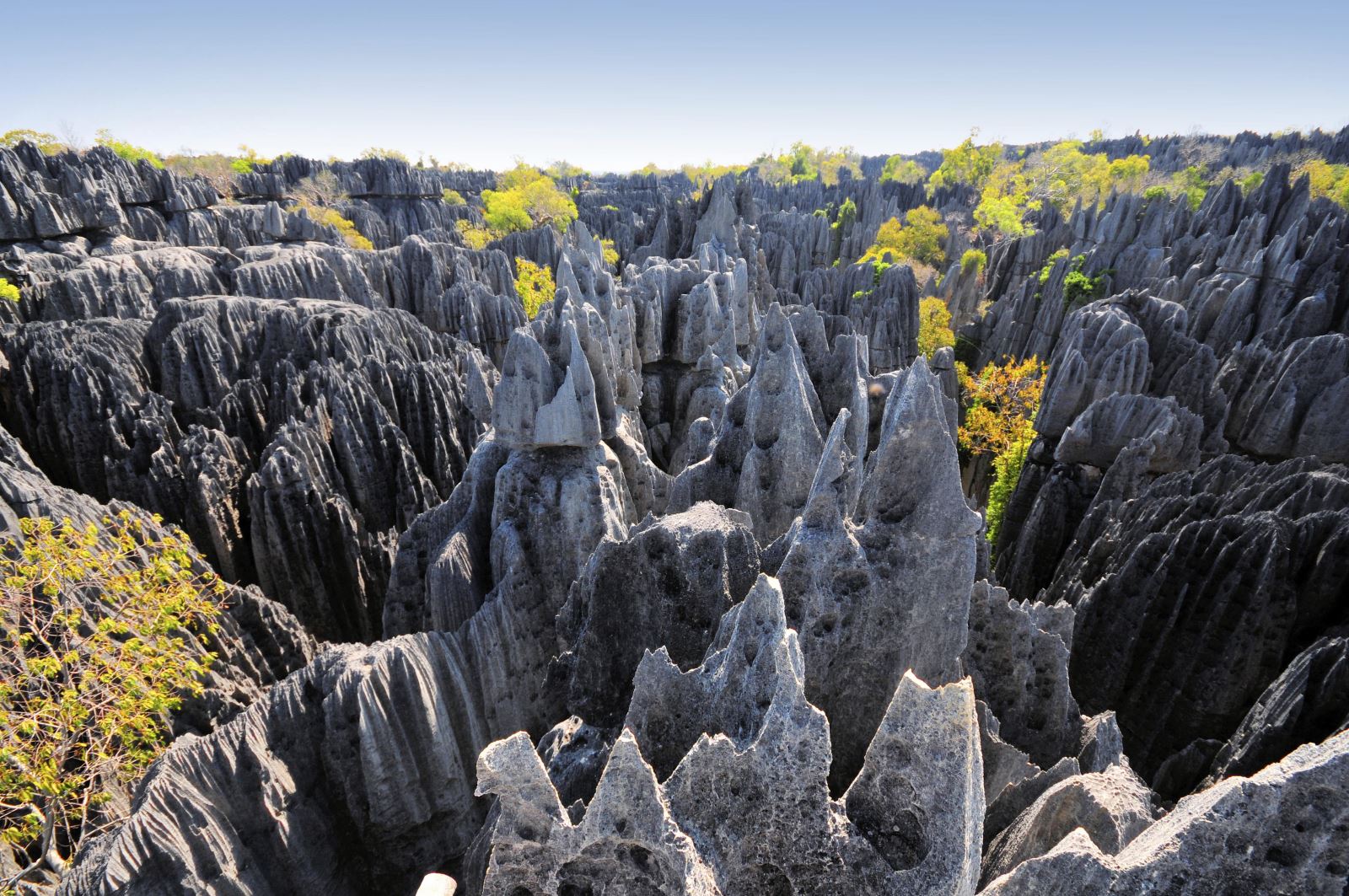
The word tsingy is indigenous to the Malagasy language as a description of the karst badlands of Madagascar. The word which translates into English as “where one cannot walk barefoot”, aptly describes the exceptional topography. This topography of eroded limestone may exist in other areas around the world, but nowhere as tall, slender and extensive as the spires here. Beneath this apparent austerity, an extraordinary world of forest canyons, humid caves and burning karst karren is inhabited by fundamentally differing plants and animals who thrive in close proximity.
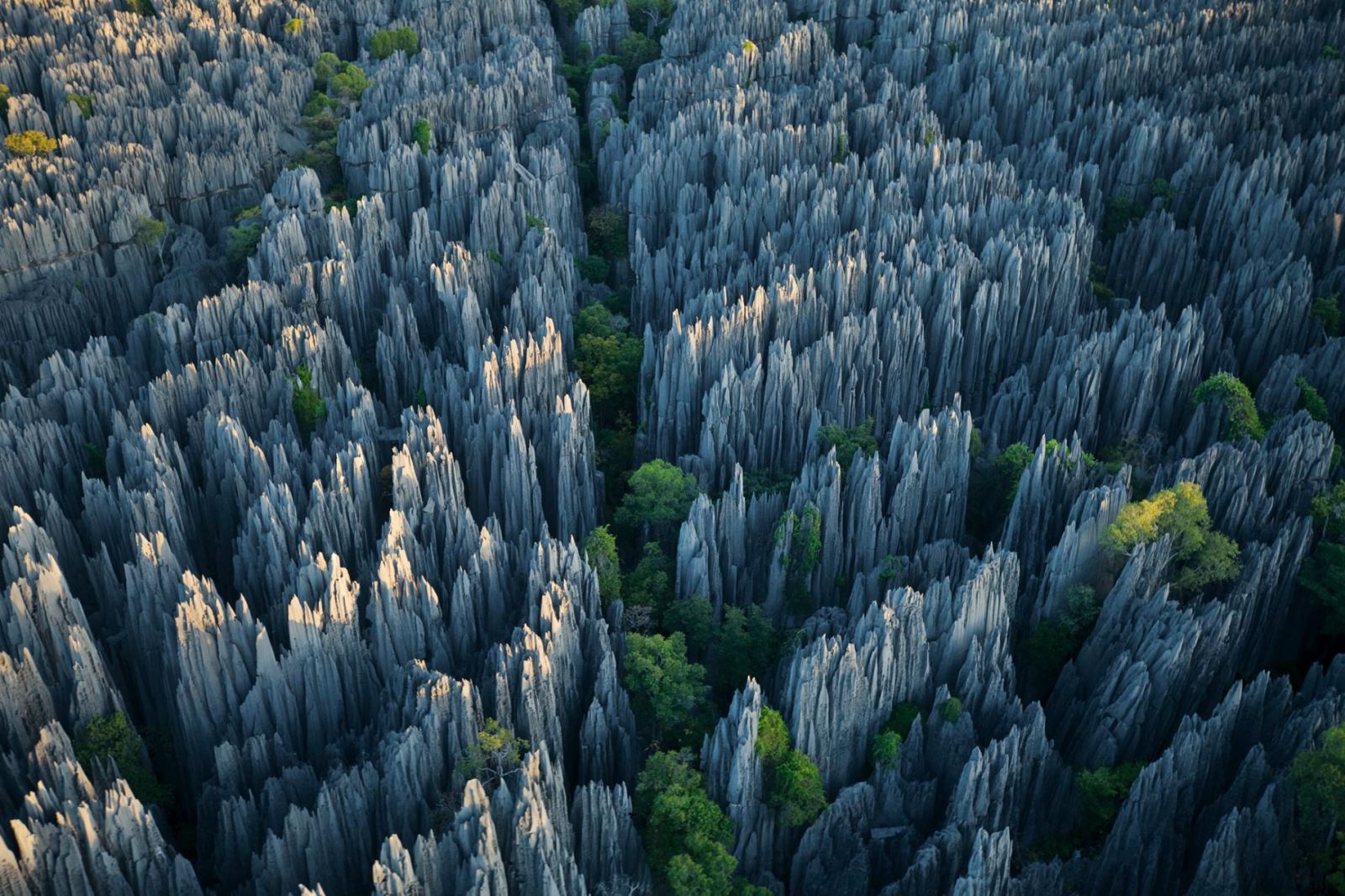
The National Park is divided in two sections; Petit and Grand Tsingy. The Tsingy are an environmentalist’s dream; much of the area beyond national park boundaries is still unexplored, harbouring unknown species. Scientific expeditions always bring a plethora of discoveries; tiny frogs, long-legged lemurs, minuscule jumping rats, plants and flowers.
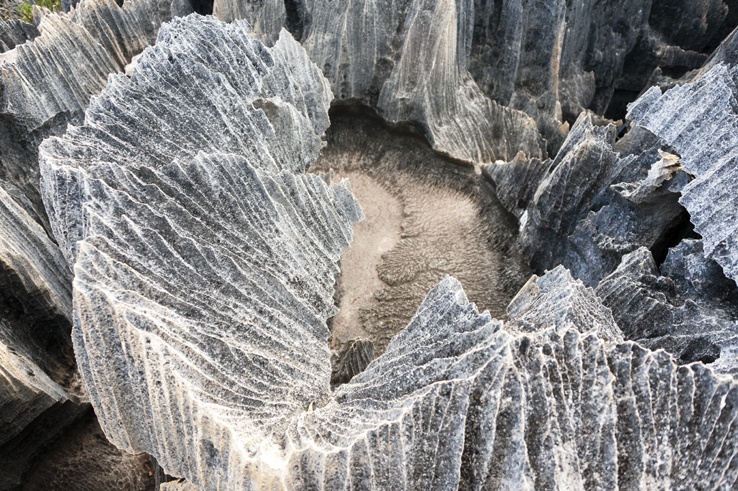
The looming landscape of spires, towers and narrow canyons (some less than a meter wide) have always discouraged humans from exploring. Local villagers believed the Tsingy were home to evil spirits and never ventured deep inside. Some caves were – and still are – used for ancestor worship.
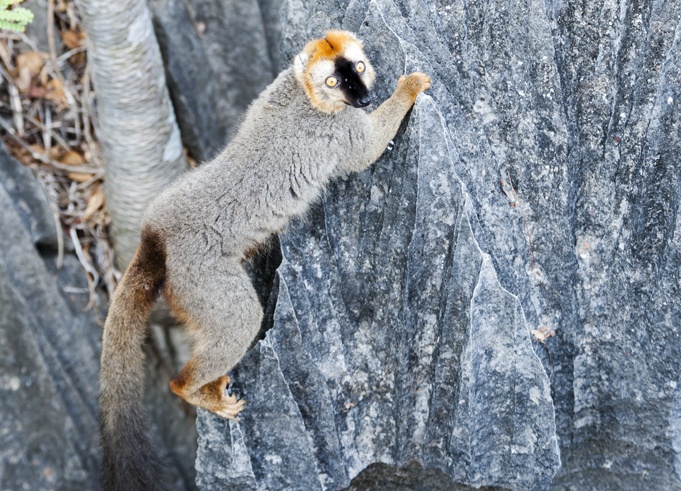
As is the case with limestone, the Tsingy were once under the sea. The ocean submerged the rocks, then retreated, repeating the process several times over the course of millions of years. The limestone was dissolved and sculpted by the action of water; rain seeped through the porous stone, corroding it into the knife-edge formations visible today.
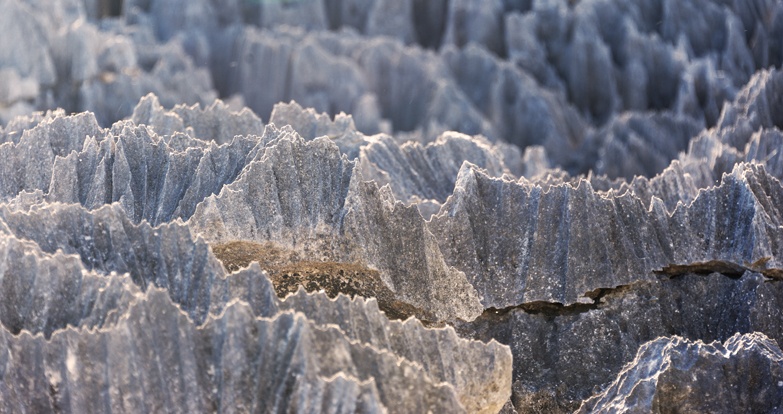
The dramatic landscape is at its most spectacular in the Grand Tsingy section of the park. The circuit takes visitors to the top of the rocks, thanks to a via ferrata system of cables, ladders and footholds.
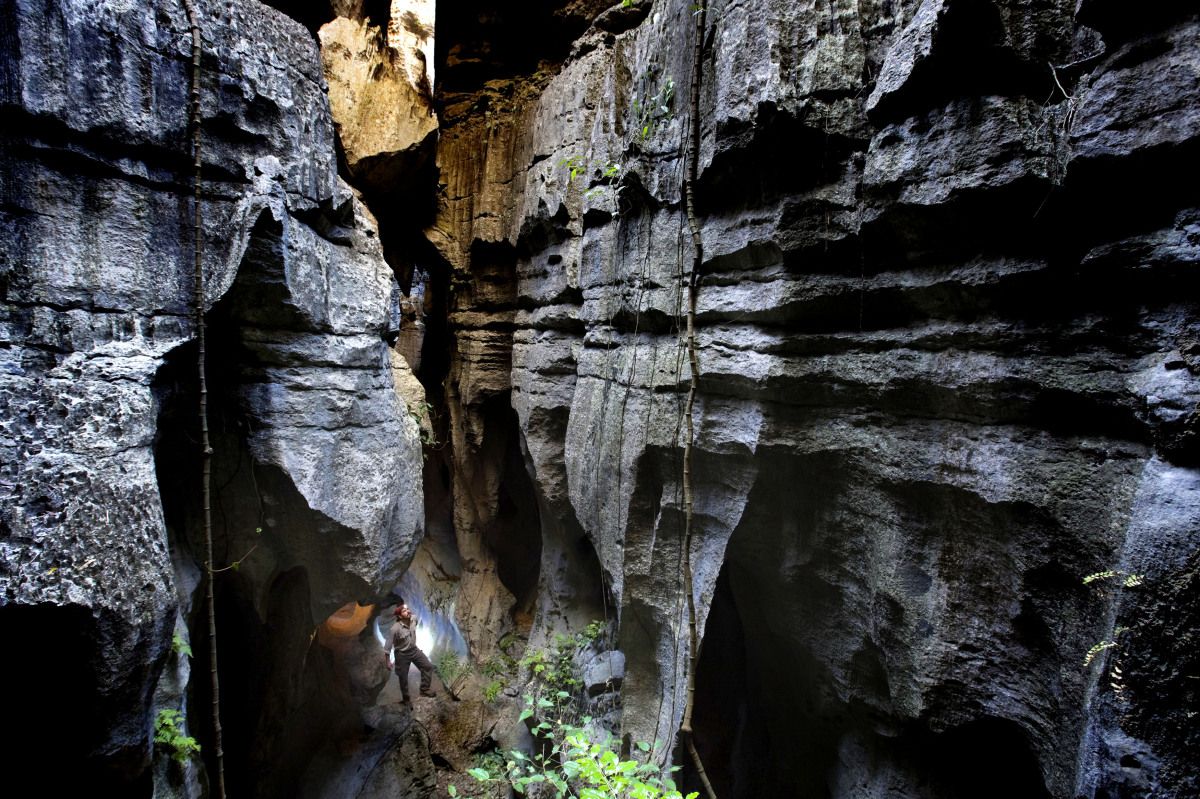
The entrance to the tsingy was pitch dark. No wonder the locals never made it in there. Two walls of limestone converged, leaving a gap that was barely enough to squeeze through. The opening over our heads was so narrow that only a slice of sky could be seen.
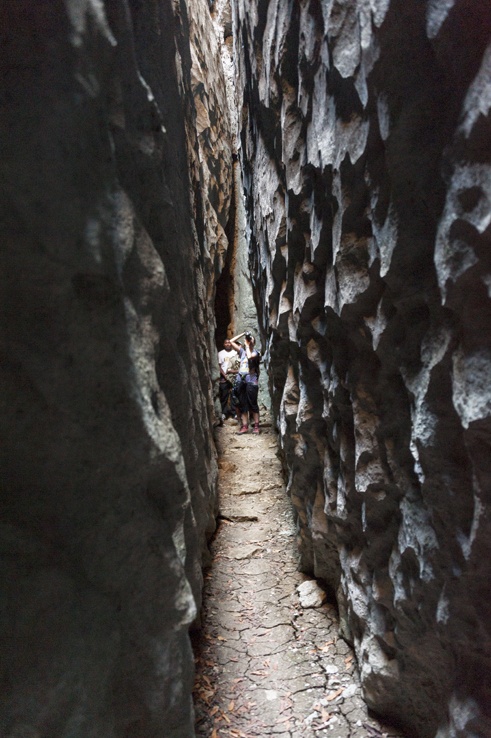
The top of the Great Tsingy rise over 100 meters high. There’s no life above, save for a few insects and birds. A few lone trees grow between the spires; some of them have roots extending for meters to the bottom. The sun shines strong and unforgiving, the heat is stifling even early in the morning.
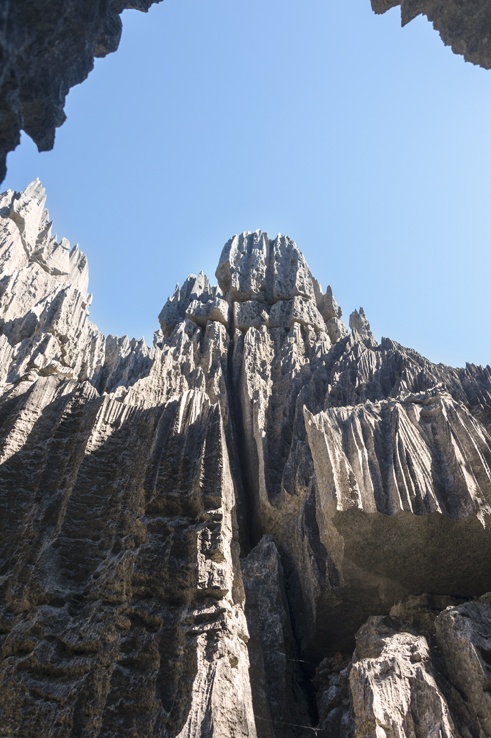
The bridge swung slowly back and forth, rocked by the breeze. At the bottom of the canyon was a triumph of green. Moss green, pea green, grass green, dark green, emerald green. Trees, bushes and shrubs, hiding mysterious wildlife, an ecosystem that scientists have only started exploring.
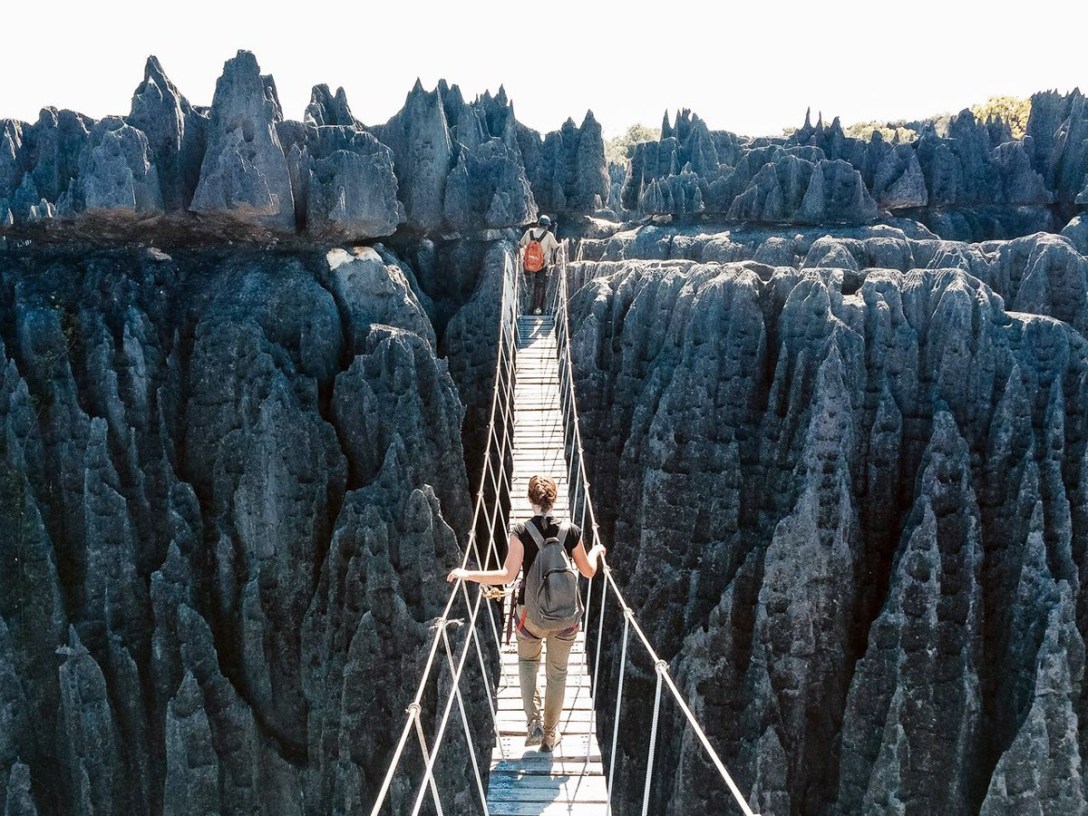
According to thecrowdedplanet



